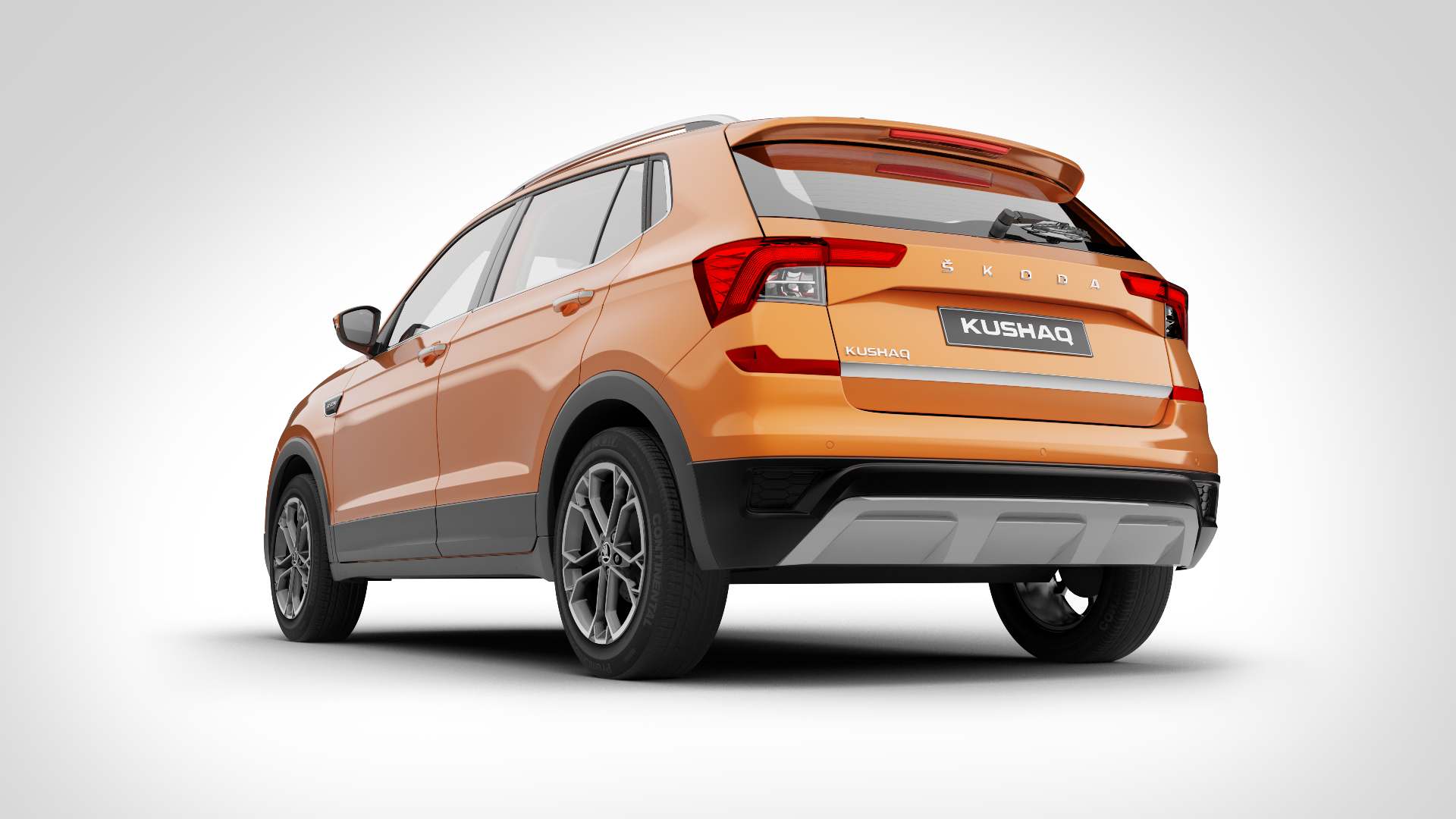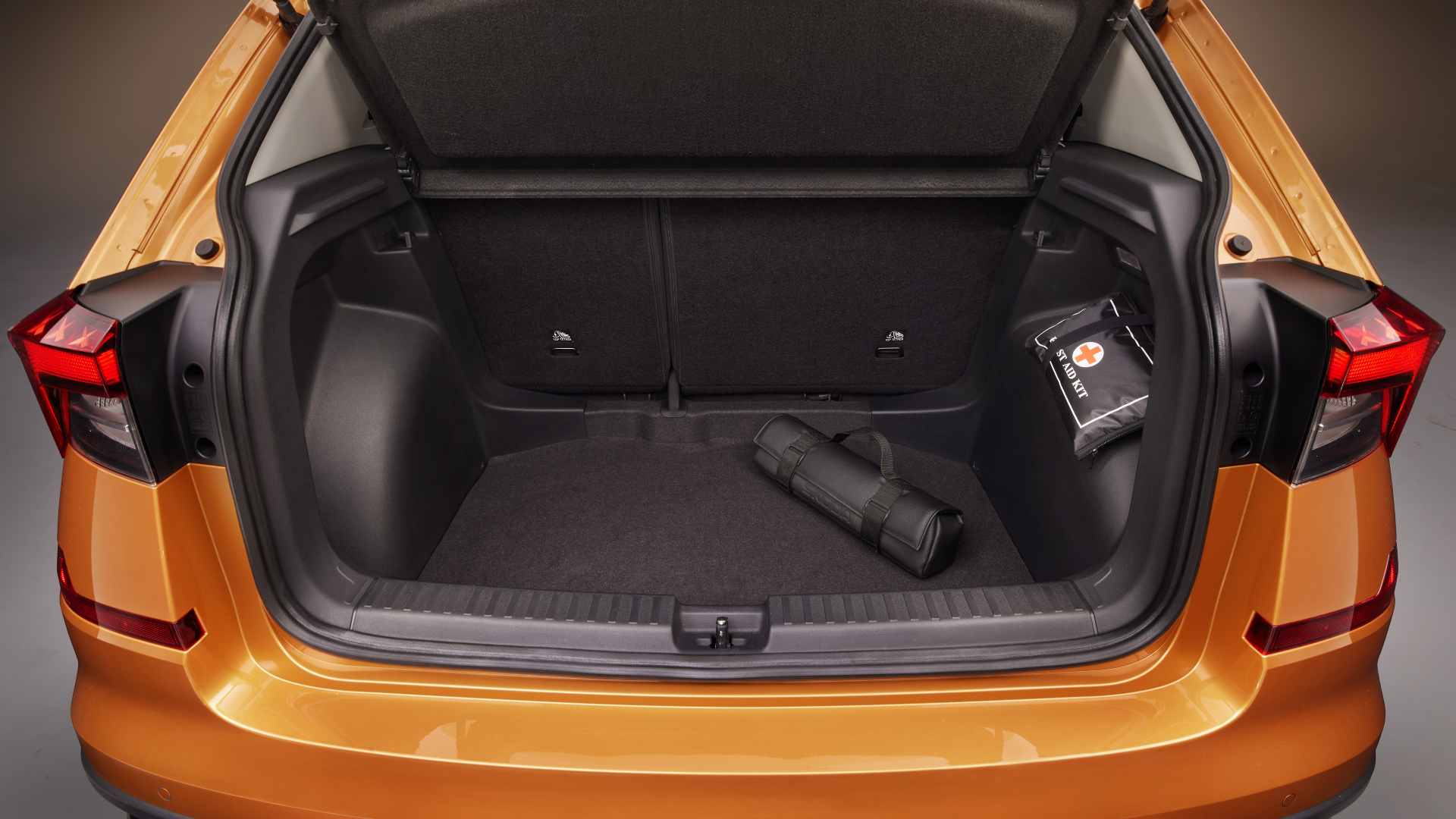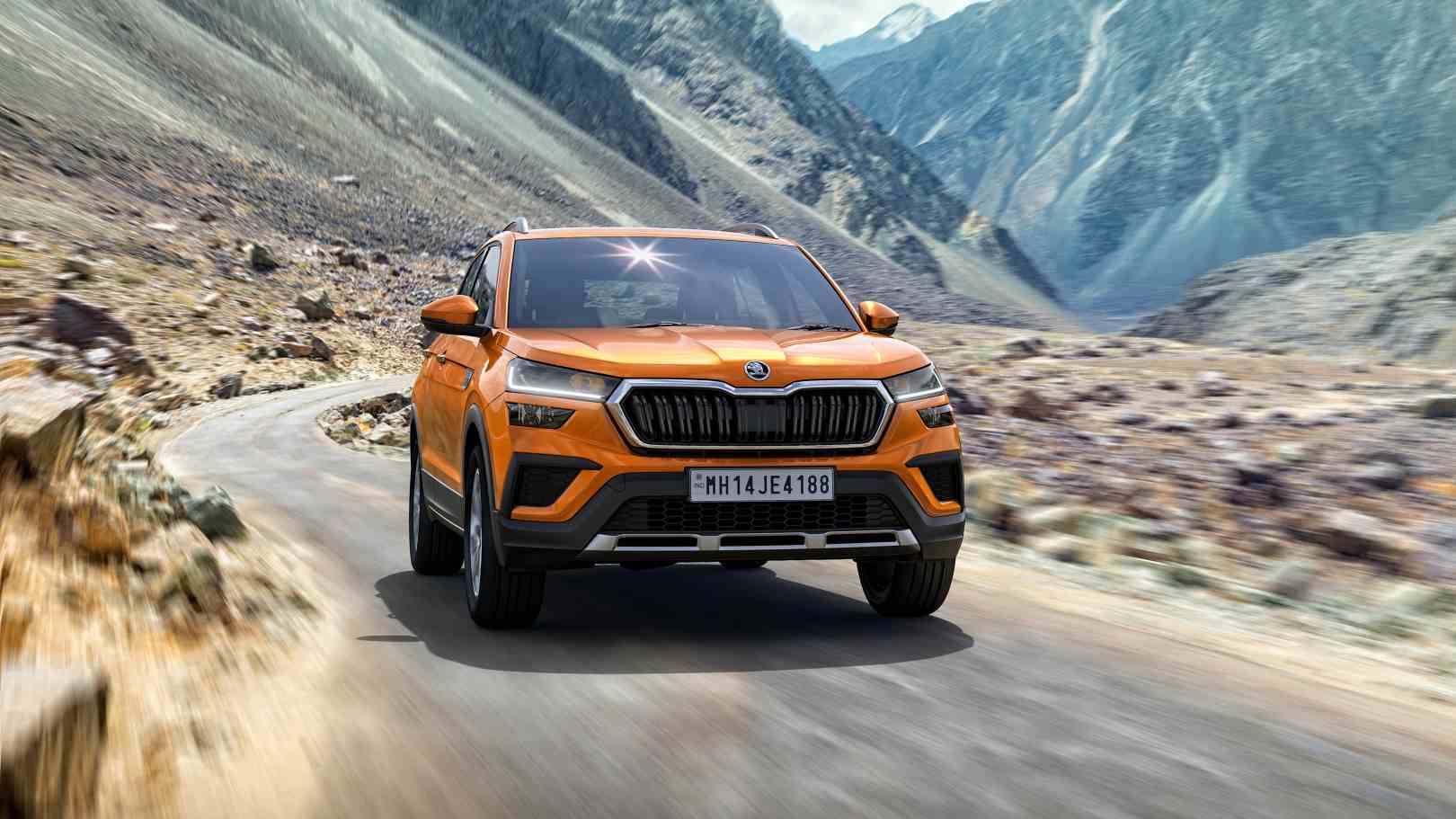Amaan AhmedMar 24, 2021 10:16:09 IST
It’s safe to say that the Skoda Kushaq is one of the most highly anticipated launches of 2021 and has had prospective buyers awaiting its arrival since 2020, when we first saw it as the Vision IN concept. On March 18 – a little over a year since the debut of the concept – Skoda took the wraps off the production-ready Kushaq, conducting its world premiere in Mumbai; a fitting move for a vehicle primarily designed for (but not exclusively restricted to) the Indian market.
Skoda Kushaq design: Small but striking
The visual link to the Vision IN concept is clear as the summer sky – while the Vision IN was a show car, it did preview the road-ready Kushaq, and the production version retains most of the design and styling cues present on the concept, save for its illuminated grille (which company officials say was always only meant for the show car, and would be too distracting on the road) and logos.
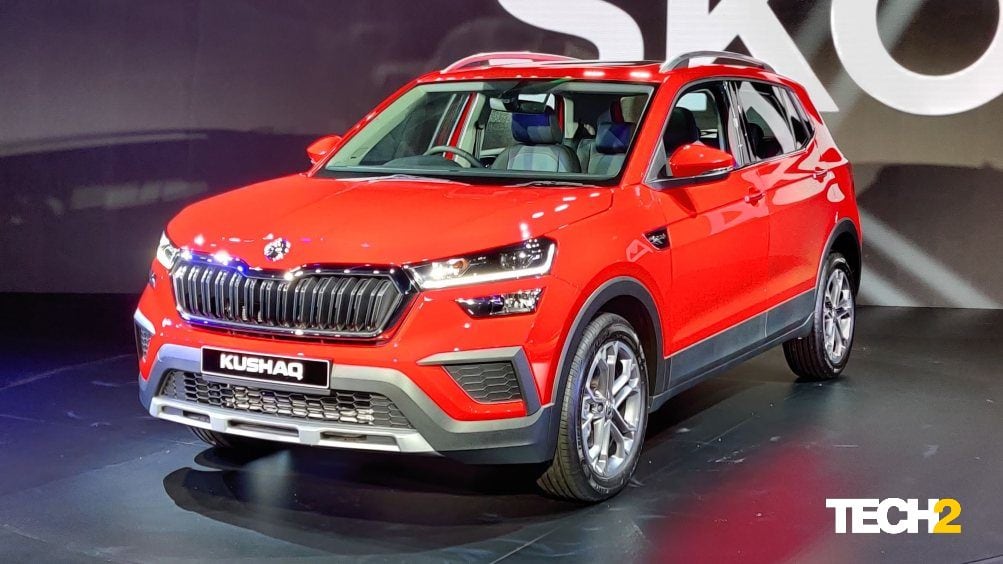
The Skoda Kushaq measures in at 4,225 mm in length, 1,760 mm in width and 1,612 mm in height. Image: Tech2/Amaan Ahmed
When you see it in the flesh, you realise size is not one of the Skoda Kushaq’s USPs. In a segment where models are growing bigger and bigger with every generation, the Kushaq – based on the Volkswagen Group’s tailored-for-India MQB A0 IN platform – is on the smaller end of the spectrum. Rivals such as the Hyundai Creta, Kia Seltos, Nissan Kicks and Renault Duster are all notably longer, wider and taller, and that becomes apparent the moment you set your eyes on the Kushaq.
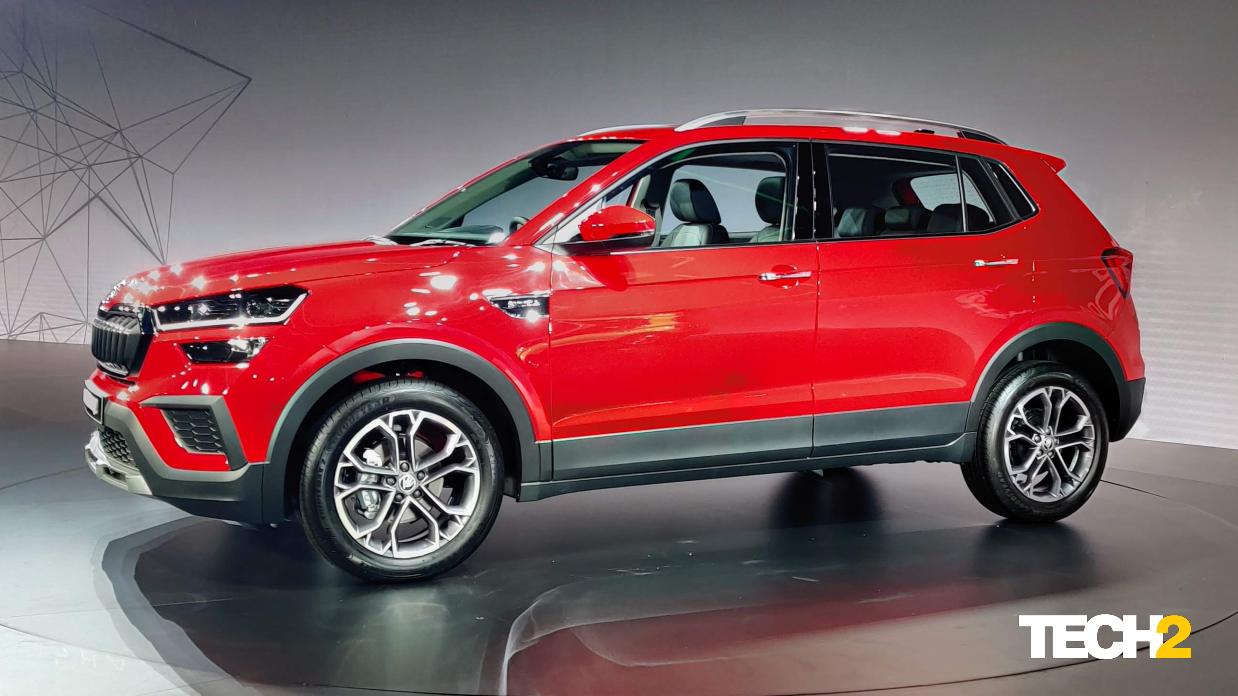
The Skoda Kushaq – with its wheels pushed out to all four corners – has a 2,651mm wheelbase. Image: Tech2/Amaan Ahmed
It appears a touch too compact for its segment, and those not in the know may even mistake it for a sub-four-metre SUV (which it isn’t). What greatly contributes to that perception are the Kushaq’s wheels being pushed as far out as possible at each corner, leading to incredibly short overhangs. That said, they do bring a benefit – at 2,651 mm, the Skoda Kushaq’s wheelbase is 41 mm longer than the Creta and Seltos.
It also has a largely similar 188 mm of ground clearance, but its lack of height further minimises its physical presence. Skoda officials say the decision to restrict the Kushaq to its current dimensions was derived from feedback at customer clinics, with prospective buyers stating the need to have something spacious yet easy to punt around town. In that sense, the Kushaq nails the brief, but for those who like their SUVs to have strong road presence, the Kushaq might not be good enough.
However, there’s no denying the Kushaq looks handsome on the whole. The LED lights draw attention, it’s smartly proportioned and looks distinctly premium, like you’d expect from a Skoda SUV.
Skoda Kushaq interior: Looks premium, feels premium
The Skoda Kushaq’s doors feel suitably solid and shut with a satisfying thunk. And once inside, you will notice the Kushaq’s interior feels just as premium as the exterior. Skoda has played it smart with the dashboard, which is minimal yet attractive, with its layered construction. There’s a mix of grey, gloss black as well as a textured finish on the dashboard; the 10-inch touchscreen takes centre stage and the two-spoke, chrome-embellished steering wheel – featuring click-scroller wheels – is typically Skoda.
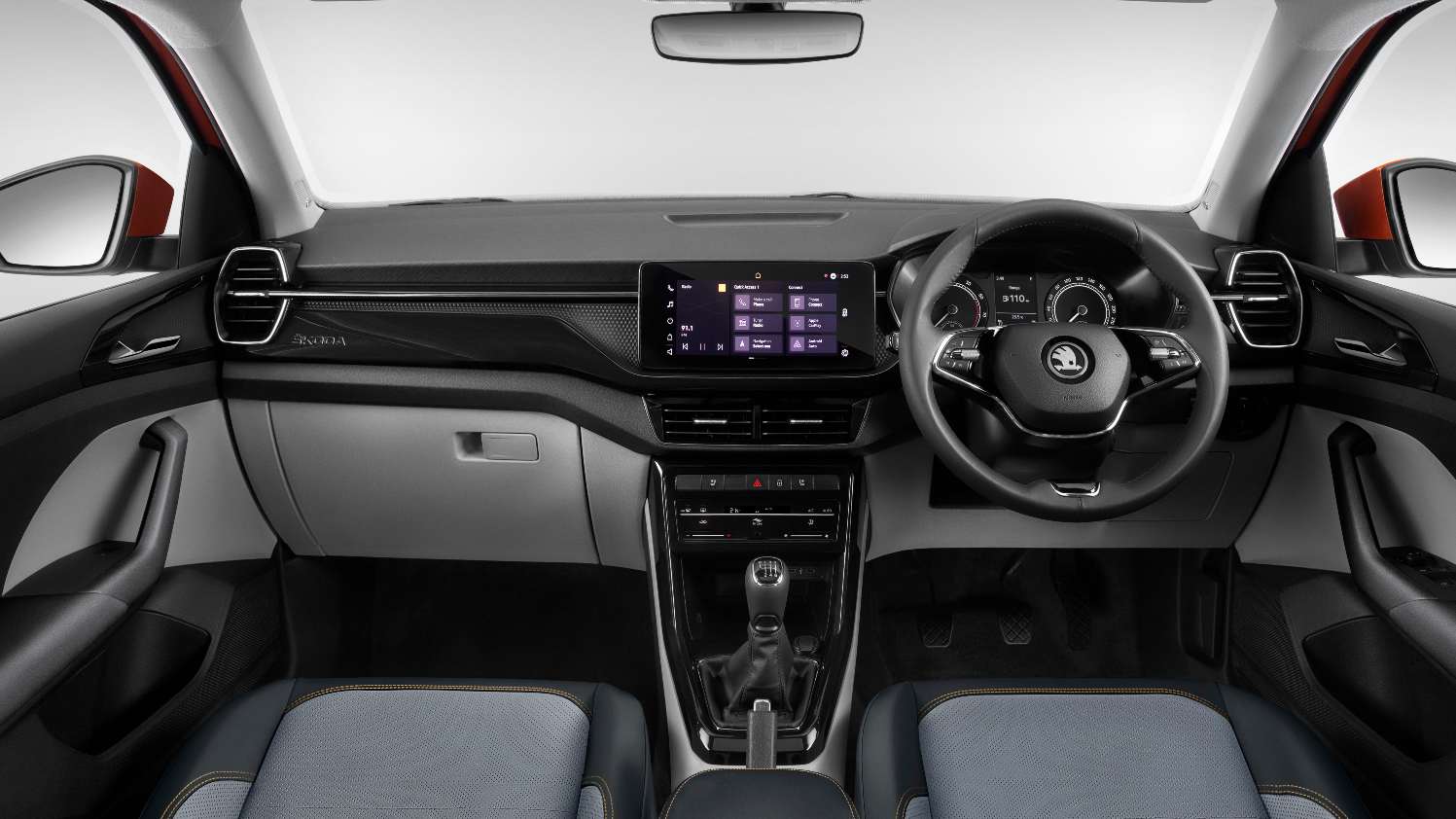
Skoda has smartly used different (and pleasant) textures for the multi-layer dashboard of the Kushaq. Image: Skoda
There are only a handful of buttons on the centre console, with Skoda opting to introduce touch controls for the climate control system. The controls are better executed than in some other vehicles, but some may still find them a bit fiddly. There are some thoughtful additions, too – the base of the cupholders up front is textured (to help keep cups/bottles firmly in place when you’re trying to open them on the go), strings in the large-sized door pockets to secure water bottles or any other loose items, and a subtle, textured recess on the dash top for placing religious idols or other items.
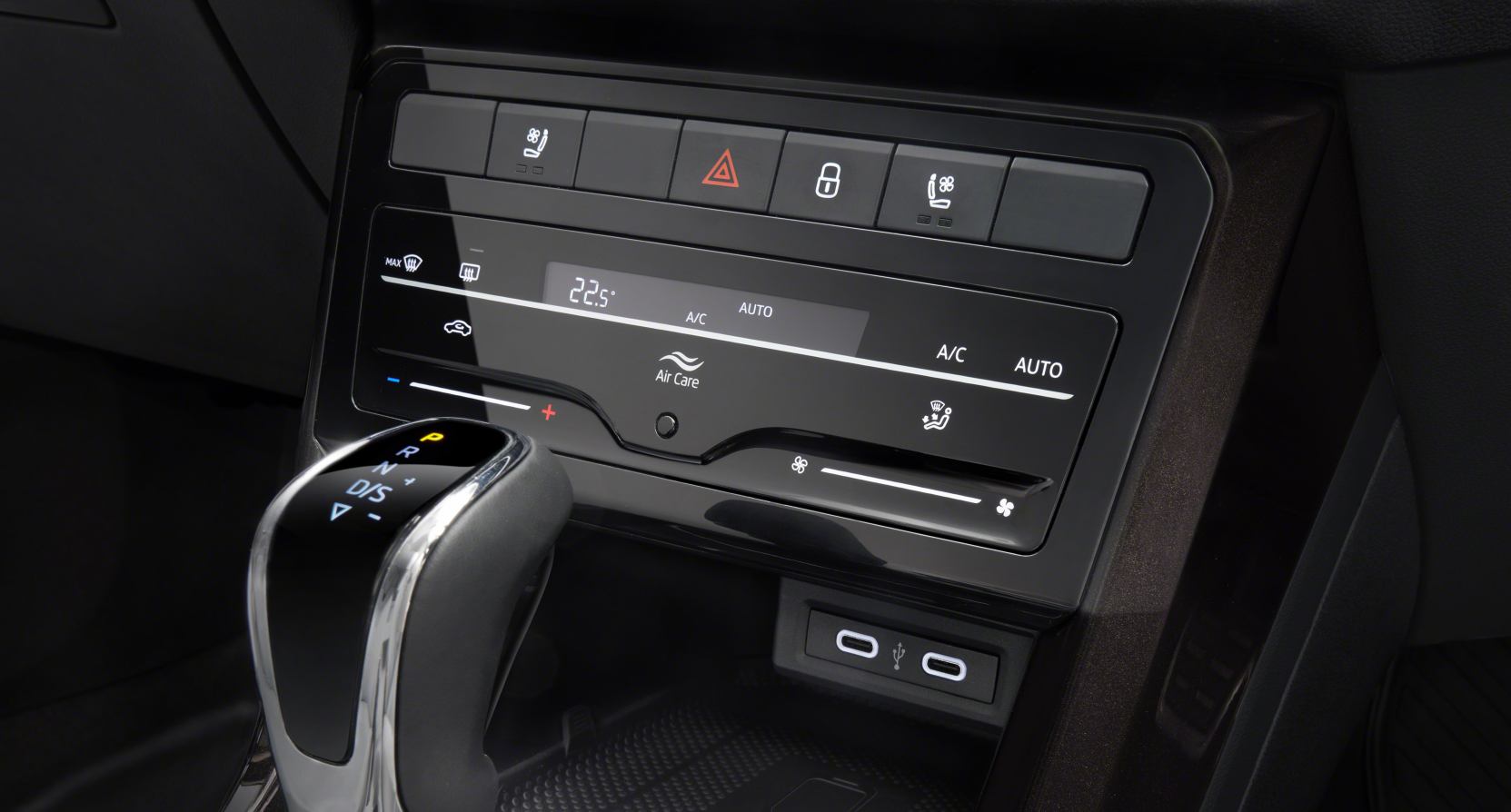
Touch controls for the climate control system better executed than in some other cars, but still a bit fiddly. Image: Skoda
It’s when you get into the back seat that you realise how narrow the Skoda Kushaq is. While the seat itself is comfortable (featuring three adjustable headrests and an armrest with integrated cupholders), it isn’t wide enough. Two adults in the back of the Kushaq will be easy, but seating three adults will be a squeeze. What helps matters a little is the transmission tunnel has been largely flattened, which helps liberate foot room for the middle passenger in the back seat, and there are dedicated rear AC vents, too. Legroom and headroom, however, are just about sufficient, and taller adults will find space to be at a premium. The 385-litre boot, too, is notably small in this class of vehicle, but folding the rear seats down (which also have a 60:40 split) provides over 1,400 litres of luggage space.

The Skoda Kushaq’s rear seat will comfortably accommodate two adults, but three will be a squeeze. Image: Skoda
In terms of features, the Skoda Kushaq has a fair few highlights – it has a 10-inch touchscreen (which runs an Android-based OS and is smooth to operate) an electric sunroof, ventilated front seats, wireless Apple CarPlay and Android Auto, basic connected car features, ambient lighting, wireless smartphone charging and a six-speaker sound system with a subwoofer, to name a few. On the safety front, the Kushaq gets electronic stability control (ESC), three point seatbelts for all passengers and ISOFIX child seat anchor points as standard, and higher-spec models also feature six airbags and a multi-collision brake system.
That said, some won’t like the fact that the Kushaq features a standard-size sunroof and not a panoramic one, and that it also misses out on an electric parking brake (EPB), a head-up display (available on the Seltos), power-adjustable driver’s seat (available on the Creta and Seltos) and a full-digital instruments display. With Skoda aiming to go toe-to-toe with rivals on price, these omissions aren’t entirely surprising, but may blunt the enthusiasm of some prospective buyers. That said, Skoda did hint that some of these features may be introduced at a later date, either with a fully-loaded Laurin & Klement variant, or with a midlife update.

The Skoda Kushaq gets a standard-size electric sunroof, not a panoramic one. Image: Tech2/Amaan Ahmed
Skoda Kushaq engine and gearbox options: Two petrols to choose from
What Skoda hopes will cheer up prospective buyers are the powertrain options. The Skoda Kushaq is a petrol-only model – there isn’t a diesel engine option available now, nor will there be one in the future. On offer will be two turbo-petrols – a 1.0-litre, three-cylinder TSI that makes 110 hp and 175 Nm of torque, and a 1.5-litre, four-cylinder TSI producing 150 hp and 250 Nm of torque.
A six-speed manual is available with both engines; the 1.0 TSI will have the option of a six-speed torque convertor automatic, while the 1.5 TSI – aimed at driving enthusiasts – will be available with a seven-speed DSG automatic (with paddle shifters). With its Active Cylinder Technology (ACT) that deactivates two cylinders at low speeds, the 1.5 TSI also promises to be fuel-efficient, with Skoda confident that the ARAI-certified fuel efficiency figures for the Kushaq will come close to matching those of a “similar-sized diesel”.
Skoda Kushaq price expectation
At the time of its launch in June 2021, the Skoda Kushaq will have as much as 92 percent local content, with that number set to rise to 95 percent in 2022. Skoda is expecting the 1.0 TSI to be the mainstay of the Kushaq range, and with the two-engine strategy, hopes to not just draw midsize SUV buyers, but also potential buyers of top-spec compact SUVs. Skoda officials reiterated the company is not aiming for cut-throat pricing with the Kushaq, but will launch it at a “competitive price”.
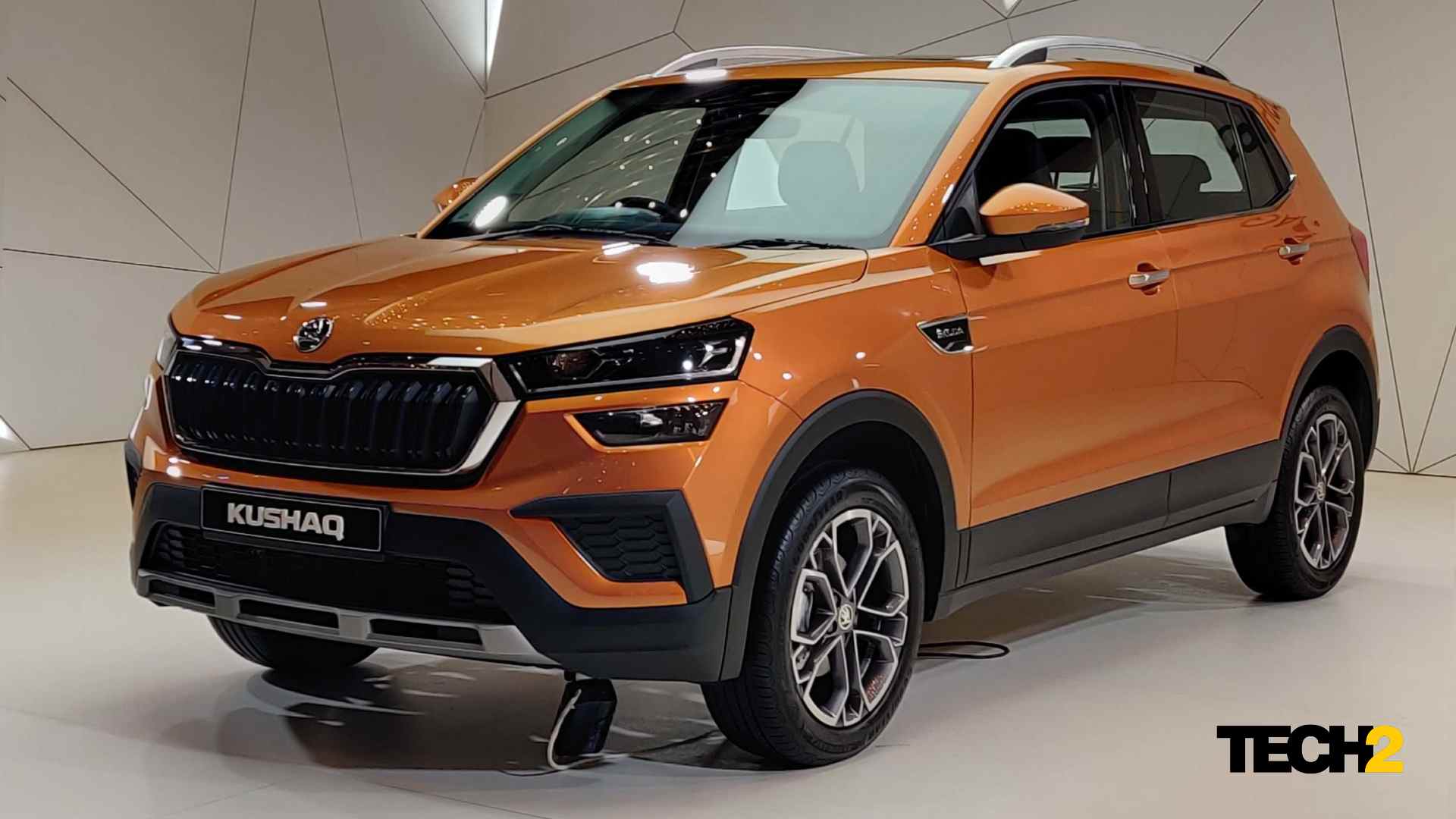
The Skoda Kushaq’s prices are expected to be in the range of Rs 10-16 lakh (ex-showroom). Image: Tech2/Amaan Ahmed
It’s important to note that Skoda is targeting sales of 30,000 vehicles in 2021, and 60,000 vehicles in 2022. A large part of those numbers are expected to come from the Kushaq, but those are relatively low compared to what Hyundai clocks with the Creta, or what Kia registers with the Seltos. For now at least, Skoda will not be able to match its rivals on sheer volumes, and is highly unlikely to undercut any of them on price. Some officials hinted at the Skoda Kushaq’s price at launch being in the range of Rs 10-16 lakh (ex-showroom), which would place it on par with the king of the segment, the Hyundai Creta, and its cousin, the Kia Seltos.
It remains to be seen how the market takes to the Skoda Kushaq, which may not be the biggest or most feature-rich in its segment, but is certain to attract those who want a good-looking, solidly-built and decently-equipped midsize SUV which Skoda promises will also be the most fun-to-drive option in its class.
I’ll admit to being slightly confused by the Skoda Kushaq. We saw it first at the last Auto Expo — before everything went to hell — as the Vision IN concept. It looked good. And small. Then the favoured sons of the auto press got the drive a camouflaged version of the car some months ago and finally this week, we saw the SUV unveiled in sheet metal.
It’s small.
Skoda already has the Kodiaq and Karoq in India, but those aren’t locally manufactured and command relatively high prices. The KUSHAQ is smaller at 4.2m but looks even smaller. I got in the back. It feels even smaller. I’m confused because in my mind, this feels like a sub-4m SUV. Heck, the Maruti Suzuki Brezza I’m driving right now feels downright spacious in comparison. But this is not a sub-4m SUV from Skoda Auto India. That is yet to come.
The Kushaq is supposed to go toe-to-toe with the Hyundai Creta. This is a tall order. The Creta is a formidable contender and larger in every way. In recent testing, it even comes out on top in terms of connected car features and conveniences. It’s hard to argue with what has become the default choice for that segment.
Where the Kushaq will score, I think, is in the build quality typical to cars from the VW Group, their excellent TSI engines and DSG gearboxes, and the announced raft of features including wireless smartphone links, ventilated seats and such — features you already get with Hyundais and Kias. So what’s left then? It’s still a tough sell for an SUV that can just about seat two in the back. My guess is that Skoda will have to price it aggressively, which will take fence-sitters over to the premium brand. They can leave a kid at home. It’s fine.
A little drunk birdy said something about it being priced between Rs 10-16 lakh, which gives me hope for the Kushaq, as well as the other products expected to arrive on the same platform. Perhaps the VW Group has figured a way around the cost/flexibility conundrum of the MQB A0 IN platform after all.


